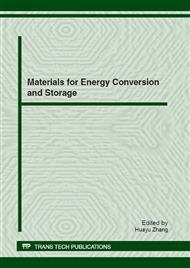p.261
p.265
p.269
p.273
p.277
p.281
p.287
p.291
p.297
Effect of Interfacial Treatment Process on the Microstructure and Properties of Cf/SiC Ceramic Matrix Composites
Abstract:
Abstract. This paper investigated the Cf/SiC ceramic matrix composites. By utilizing different interfacial treatment processes to prepare carbon-fiber preform, the preform was then densified by infiltration and pyrolysis(PIP) with polycarbosilan/xylene solution as precursor, and the Cf/SiC ceramic matrix composite specimens were fabricated. Mechanical tests such as bending test and fracture toughness were performed for Cf/SiC samples. The results show that the interfacial bonding strength in the sample with high-temperature treatment process was improved due to removing surface sizing. The samples which were treated up to 1400°C exhibited the highest three-point flexural strength, up to 595MPa; The samples which were treated up to 1400°C and deposited by pyrolytic carbon(PyC) coating shows the highest fracture toughness value which was 20.70MPa•m1/2.
Info:
Periodical:
Pages:
277-280
Citation:
Online since:
July 2012
Authors:
Price:
Сopyright:
© 2012 Trans Tech Publications Ltd. All Rights Reserved
Share:
Citation:


